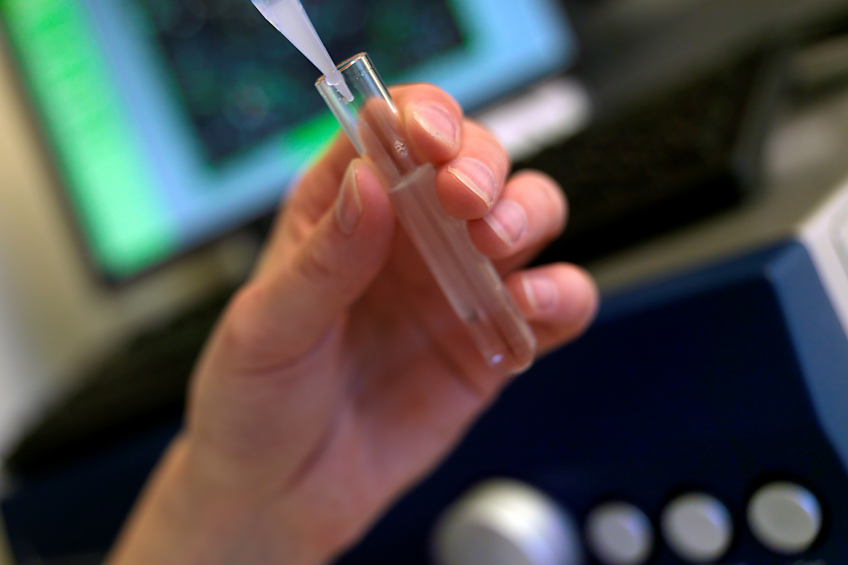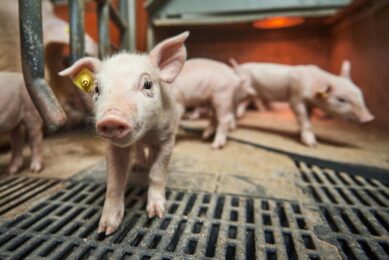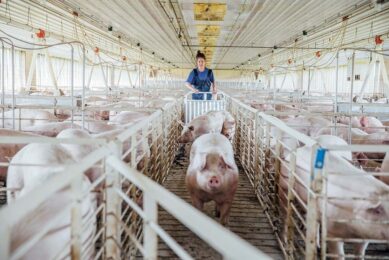Assistance for the eye: Analysing semen by computer

Only the highly trained eye of an experienced breeder is able to judge correctly whether sperm is successful or not. An objective computer analysis of the sperm may therefore help to achieve more consistency in the AI process..
By Hanneke Feitsma DVM, research manager, Topigs Research Center IPG
Ultimately, success in artificial insemination (AI) of pigs is all about optimising results on the farm. Every customer receiving doses for insemination expects the highest quality of boar semen in order to ensure maximum farrowing rates and litter sizes. To satisfy this requirement, the laboratory at the AI centre analyses every ejaculate collected and assesses it against benchmark values for sperm concentration, morphology and motility.
Subjective analysis of boar semen samples has been done for years. Its intention was always to use observed characteristics of sperm cells to predict boar fertility. In recent times, however, we have learned that the classical forms of sperm assessment have only a low predictive value.
Objective methods
The introduction of more objective methods, on the basis of detailed AI research, has brought significant improvements in the efficiency of boar semen production by professional centres. Its achievements include that it has enabled the sperm count per dose to be reduced without negatively affecting herd performance.
An insight into the process behind modern insemination doses was given in 2012 by a PhD doctoral thesis on the subject of the prediction of porcine male fertility. It was presented by Marleen Broekhuijse from work she conducted with support and supervision while at the Topigs Research Center IPG.
Her thesis follows the arrival of objective boar semen analysis after half a century of subjective quality assessment. The starting point came in 2003 when studies began on the possible benefits of using Computer Assisted Semen Analysis (CASA) to assess boar semen, which led to the installation of seven such systems at Topigs AI laboratories in the Netherlands.
Electronic tracking
In brief, computerised semen analysis visualises and follows the movement of every sperm in a sample examined under high-powered magnification. This electronic tracking records the exact trajectory of each individual cell in the observed microscopic field. There are five different characteristics of motility calculated from these tracking records. The calculation is unbiased and therefore avoids the human factor associated with visual assessment by a laboratory technician. At the same time the system computes a highly repeatable and very accurate concentration measurement when used with a standardised counting chamber.
The motility characteristics calculated for an ejaculate are:
• Average path velocity (VAP);
• Straight line velocity (VSL);
• Curvilinear velocity (VCL);
• Lateral head displacement (AHL);
• Beat cross frequency (BCF).
These were analysed for their relation with fertility traits as farrowing rate and litter size. Where VCL and BCF showed a significant effect on farrowing rate, VAP, VSL and ALH showed a significant relation with litter size. The size of the effect and the weighing factor were put into a model, a tool to determine the dilution factor for the ejaculate assessed.
The process is not only useful in evaluating current semen collections, it also provides the perfect tool for linking to field fertility results to check whether the quality of the semen had been judged correctly in the past.
As Broekhuijse’s thesis explains, these retrospective checks were made possible in this case by the merging of two extremely large sets of data – one from Varkens K.I. Nederland, a sister breeding company of Topigs, that now refers to over 1.5 million ejaculates collected from AI boars and the other being the Pigbase breeding dataset of Topigs that contains over 18 million farrowing records from 750 purebred and commercial sow herds. The merger has created a vast database in which the field results of artificial insemination can be traced back directly to the semen collection from which the doses were obtained since in the Netherlands only single sire inseminations are allowed.
The linking of information from farms and AI centres has finally answered the vitally important question of how to predict the fertility of boars from measurements of their sperm. Based on this knowledge, there is increased confidence about using analysis by computer to calculate the right number of sperm cells per insemination dose.
New perspective
At the same time, it has given a new perspective on the evaluation of the movement or motility of sperm cells in the laboratory. The method used in the past relied on the judgement of a trained technician who examined the semen sample through a microscope. Usually the sample was allocated a score or value according to the percentage of sperm observed to be moving or motile. But these percentages reflected the opinion and training of the technician so were variable between lab technicians and AI laboratories and there was no reliable way of relating them to fertility results.
Varkens K.I. Nederland implemented a CASA system in all of its AI laboratories in 2006. Broekhuijse and her research colleagues looked back at results from the period 2006 to 2009, covering more than 45,000 ejaculates of known fertility, and concluded that the sperm motility parameters found from the computer data correlated significantly to the farrowing rate and the total number of piglets born from the insemination.
The method was confirmed to be objective – there was no longer any effect on the farrowing rate and litter size from the laboratory technician who assessed the sperm or the AI centre supplying the semen dose. Furthermore, unlike in the pre-CASA period from 1998 to 2006, the fertility figures were not affected by the number of motile sperm cells in an insemination dose.
Boar selection
Another retrospective review of the Dutch AI database is covered by the same thesis and underlines that assessing fresh semen motility by eye is too subjective and unreliable to be used to select boars for AI programmes, even where technicians are trained and experienced.
With CASA, as Broekhuijse’s work has demonstrated, there is a real and identifiable relationship between motility parameters as identified by computer tracking and the fertility resulting from insemination with that semen. Her investigation of results led her to conclude that each difference of 10 percentage points in motility was worth the equivalent of 0.2 piglets born alive. Multiplied by the number of farrowings nationally per year, such an effect soon mounts up to a major financial reward from being able to identify sperm motility more correctly.
In fact, there has been a double benefit from the introduction of standardised CASA for AI. It has given a better way to estimate the correct dilution rate for each ejaculate collected – a critical factor for reducing the number of sperm in insemination doses. But it also offers a more secure basis for estimating the fertility of breeding boars. When taken together, these add up to considerably more efficient semen production, which directly benefits every sow herd that receives boar sperm in doses for AI.
Join 18,000+ subscribers
Subscribe to our newsletter to stay updated about all the need-to-know content in the pigsector, three times a week. Beheer
Beheer










 WP Admin
WP Admin  Bewerk bericht
Bewerk bericht